Duck: Description, Types, Pictures, & Fun Facts
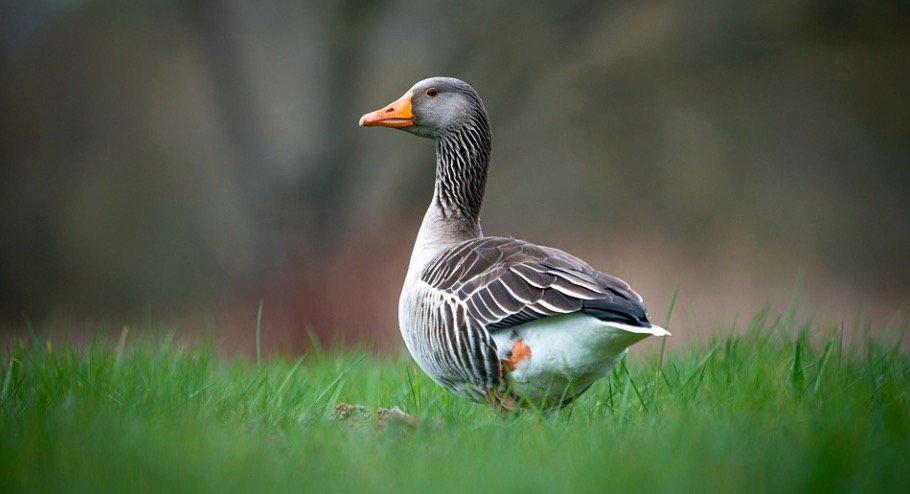
Table of Contents
Scientific Classification of Duck
- Kingdom: Animalia
- Phylum: Chordata
- Class: Aves
- Order: Anseriformes
- Family: Anatidae
Location of Duck
- Africa
- Asia
- Central America
- Eurasia
- Europe
- North America
- Ocean
- Oceania
- South America
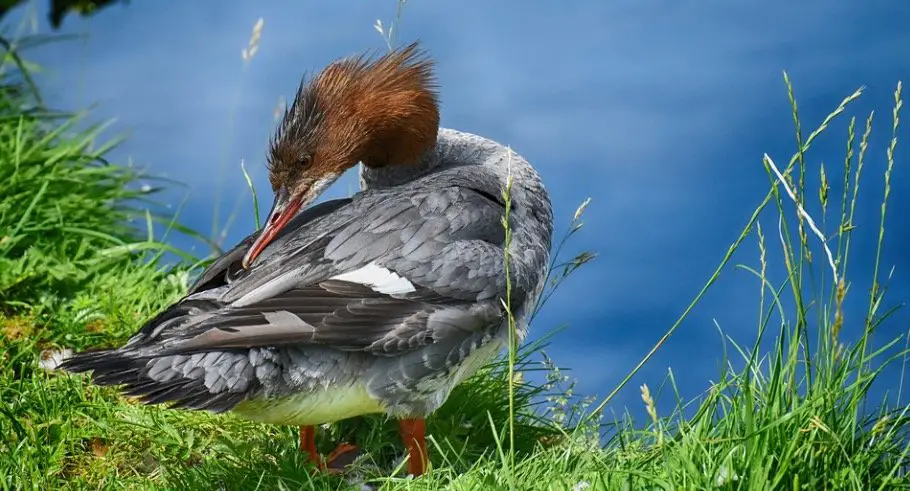
Duck Description
The omnivorous birds, commonly known as ducks belong to the family Anatidae. The bird feeds on insects, small fish, seeds, plants, and crustaceans. The bird is also called waterfowl because ponds, rivers, and lakes are their favorable habitats.
Except for Antarctica, ducks can be spotted on every continent. Some species of the bird prefer freshwater bodies as their habitat while other species are found in saltwater habitats. The ducks can live up to 10 years in the wild.
Incredible Facts About Duck!
• The feathers of all the species of duck are waterproof.
• The birds adopted a unique system of blood vessels, which they use to keep their feet warm in cold and icy weather.
• The quacking sounds, which is also their characteristic feature are not made by all ducks.
• To preen and clean their feathers the ducks can turn their heads backward.
• The feathers of a male duck are more colorful than the feathers of a female duck.
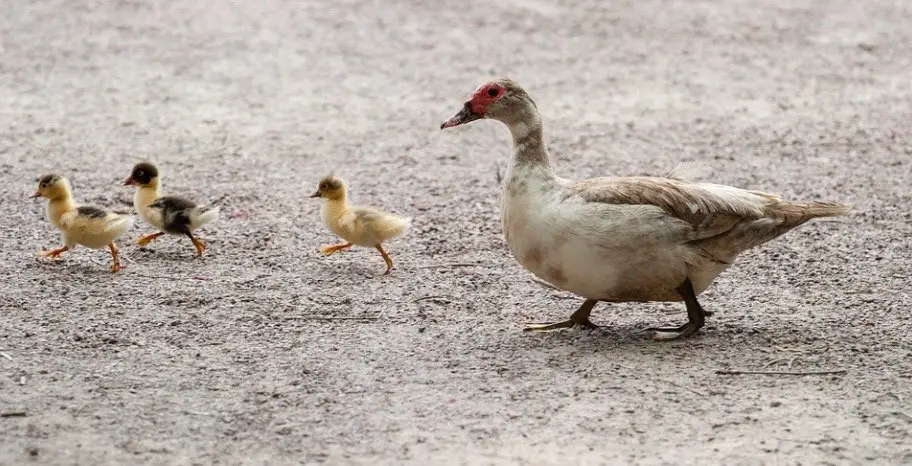
Other Species of Duck
The mallard, which is a species of duck has the scientific name Anas platyrhynchos. It is believed that the species is a common ancestor of all species of ducks, which are domesticated. The species name of the bird ‘platyrhynchos’ is derived from a Latin word, which means flat-nosed.
They get their name due to the shape of their bill. All the species of ducks belonging to the same family, Anatidae and the class Aves. The ducks can be classified into dozens of types. Common types of Ducks-
• Mallard: It is a common type of duck that feeds at the surface thus they are also called dabbling ducks. The birds are distributed in the temperate and subtropical regions of the world. Their populations can be found in North America to Eurasia and North Africa.
• Wood duck: wood duck is also a type of duck, which is also called a type of perching duck. It means that the species can perch high up in trees. The native habitat of the birds includes North America. The population of the ducks living in southern regions is non-migratory and they do not migrate like species belonging to northern parts.
• Canvasback: As the name indicates, the ducks dive below the surface to feed. Commonly, the canvasback ducks are found in North America and they prefer to build their nests in prairie marshes because the region is surrounded by vegetation.
• King Eider: It is a sea duck of relatively large size. The breeding fields of the bird are located on the arctic coasts of northeastern Europe, North America, and Asia. The oldest member of this species is lived up to 19 years.
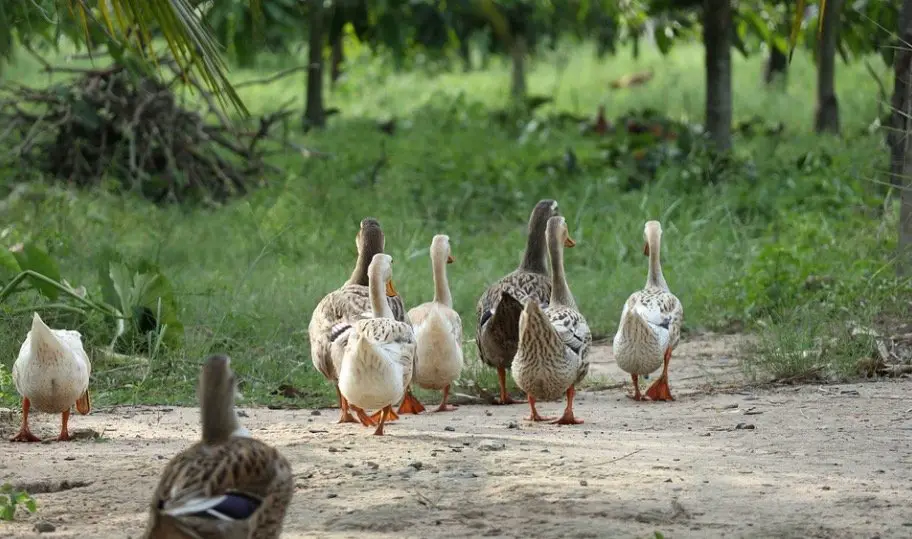
Appearance and Behavior of Duck
The feathers of the duck are also known as drakes. Generally, male ducks consist of more colorful feathers as compared to female ducks. The color of the feather varies from green, purple, silver, and blue. Sometimes the female ducks are also known as hens.
The color of a hen is usually brown or greyish and the male duck consists of green plumage. However, the color of the bird varies among species. For instance, the color of feathers of a Cayuga duck is iridescent green and the female Cayuga consists of iridescent green plumage however it is less apparent than the male duck.
The bills of both male and female ducks are black. The bird is originated from a place in New York, named Lake Cayuga, thus it got the name Cayuga duck. Almost all species of ducks have webbed feet. The feet of the bird assist it in swimming in lakes, streams, and ponds.
The bill of the duck is long and flat which helps it in scooping insects, vegetation, and other food materials. A lamella is present on the sides of the duck’s bill, which is seen while looking closely at a bill.
It is like serrated edges that enable the bird for filtering sand and mud when it dips its mouth in the water for searching food. A person can assume the type of food eaten by the duck by looking at the shape of the bill of duck.
The birds eating abundant vegetation including algae and grasses have flat bills while the fish-eating species consist of the sharper and more pointed bill. A nail is present at the end of their bill, which helps the duck in digging in the mud and for eating insects, vegetation, and other food.
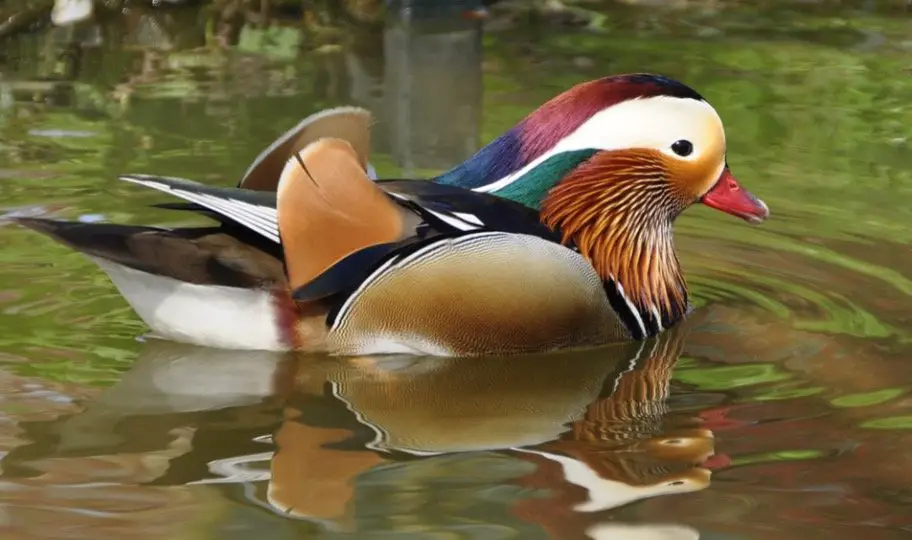
Various types of birds also vary in size. The length of the bird varies from 20 to 26 inches and the weight of a duck is up to 1.6 to 3.5 pounds. The length of the bird is equal to the length of one and a third bowling pins.
The weight of the duck is about 3 pounds, which can be compared to the weight of a half-brick. The biggest species of bird lives in North America is named the Muscovy duck. The length of the species is around 30 inches and its weight is about 15 pounds.
Another waterfowl is a goose which is relatively larger than a duck. The length of a Canadian duck is around 2.5 to 3.6 feet and its weight is 7.1 to 14 pounds. The ducks made several adaptations to protect themselves from predation.
For example, a wild duck has the flying ability and it can take off into the air to escape from any predator. Similarly, a female duck hides in the tall weeds because of its dull feathers and it helps it to protect itself.
Ducks usually live in groups because it is safe for them and they are also social organisms. The group of ducks is known as a raft or a team. Sometimes, the teams are also named flock. Around ten to dozens of birds could be contained in a flock and the number depends upon the population of birds in the region.
Quacking is a usual sound of ducks and they use their call or quacking to alert the members of the group about any potential predator. Ducks usually try to stay away from people and have a very shy nature.
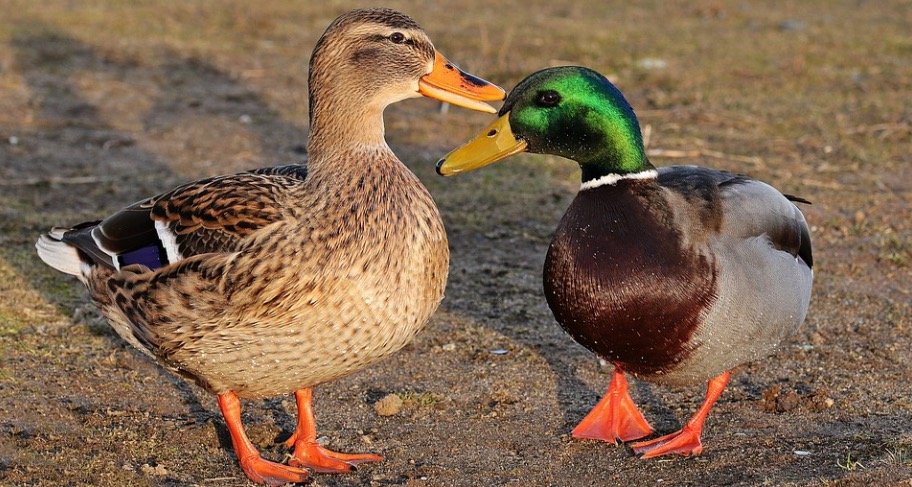
Habitat of Duck
Ducks are distributed in all the continents of the world except Antarctica. Some species of bird prefer tropical climate to live in while others live in temperate climates. Streams, ponds, rivers, and lakes are the common habitat of birds.
Sometimes, they made a nest of tall grass near a water body and sleep in the nest. Other times, while floating in the water, the birds sleep. Some duck species are migratory living in North America. The birds migrate in the fall because of food scarcity in this region at that time.
During winters, they migrate towards the southern part of the United States. Some species migrate towards central California during the winter season. The birds use the change in daylight during springtime as a signal and start traveling back to the north.
Diet of Duck
Ducks are omnivorous birds. Their food usually consists of anything abundant in their natural habitat.
What do Ducks Eat?
Insects, Fruits, seeds, algae, small fish, and crustaceans are major food materials for ducks. You can sometimes see the ducks when only their rear end is sticking out of the water.
Usually, at that time, the ducks were looking for food at the bottom of the pond and tips its head underwater to filter through the sandy bottom. Some species of ducks find food by diving beneath the surface while other species float on the surface to find food.
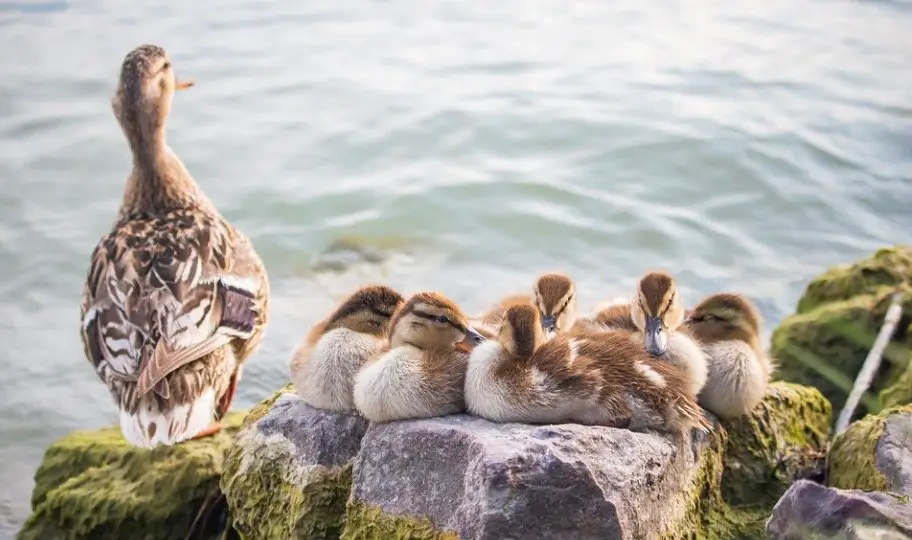
What Eats Ducks?
The major predators of ducks include possum, peregrine, falcon, coyotes, hawks, snakes, and raccoons. Thus the birds face the threat of predation from several species. The babies or ducklings are also threatened for predation.
Some large fishes such as pike or bass also feed on the ducklings. Besides these, the snapping turtles, crocodiles, and herons are also major predators that feed on the ducklings.
Predators and Threats of Duck
The major predators of an adult duck include coyotes, peregrine falcons, raccoons, hawks, snakes, and possums. When an adult takes flight from any water body, it can be easily captured by a peregrine falcon.
The adult birds can be overpowered by coyotes, raccoons, and possums by sneaking after capturing them. Some animals such as crocodiles, snapping turtles, pike, and bass prey upon ducklings. The ducklings are very small and also unable to swim very fast thus they are more vulnerable to predation.
So the small creatures can be over headed and dragged by large fishes such as pike or bass. Habitat destruction is also a major threat for these birds.
Their natural habitat such as wetlands is affected by pollution and some of them are also hunted by humans for sports and also for food. The population of ducks is also vulnerable to some diseases such as avian flu.
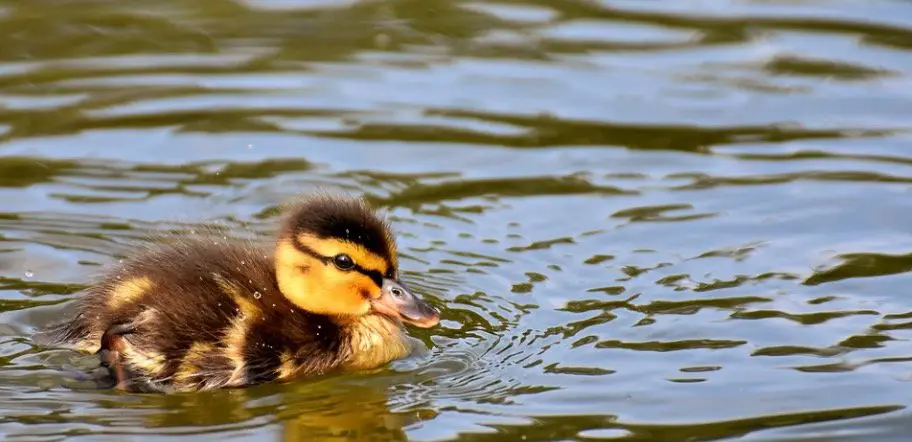
Reproduction, Babies, and Lifespan of Duck
The mating season of duck starts in December. Usually, a female chose her mate and prefers a beautiful male duck with healthy plumage. The birds also show courtship rituals including bobbing heads, making whistling sounds, and swimming around one another.
The male duck tries to get the attention of a female by making sounds. The birds pair up for only one breeding season and in the next season, they find a different mate. Thus ducks show seasonal monogamy.
The nests are usually built by female duck, which uses sticks, grasses, and feathers to build the nest. The gestation period is about 28 days, which is the same as the Canadian geese. From mid-march to the end of July, they lay eggs.
A clutch contain usually 12 eggs and the weight of the egg is about two and a half ounces. After laying eggs, the contribution of males in the care of ducklings is negotiable. The eggs hatch in about 24 hours and the babies are named ducklings.
Their feathers started drying just after the hatching and they also start wiggling their legs. The growth is very quick as the mother directs her babies into the water after ten hours only! Until the babies learn to swim and find food in water, they stay with their mother.
The mother keeps them warm in cold conditions and also gives them protection. The ducklings become independent and able to fly after 50 to 60 days.
The ducks reach sexual maturity at the age of one year and live up to 10 years. The oldest duck lived for the age of 29 years. The population of the bird is also vulnerable to several diseases such as hepatitis, aspergillosis, and colibacillosis.
Population of Duck
The population of a type named the mallard (Anas platyrhynchos) is estimated at around 19,000,000 birds worldwide. The population of birds in only Europe is estimated at 5,700,000 to 9,220,000 birds. The IUCN red list of threatened species listed the duck as the “least concerned” species because the population of duck is increasing all over the world.









